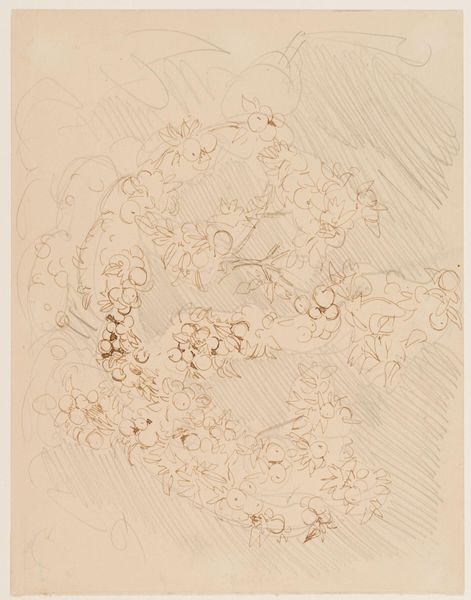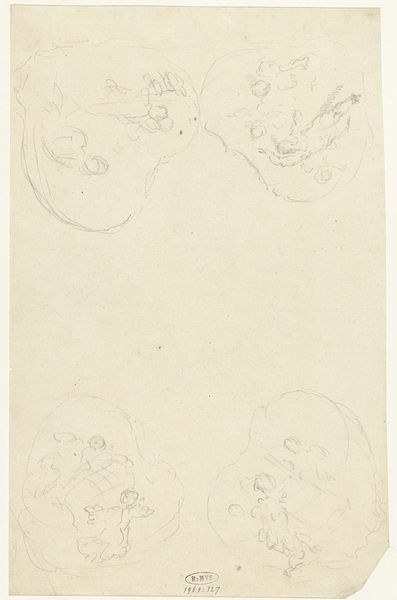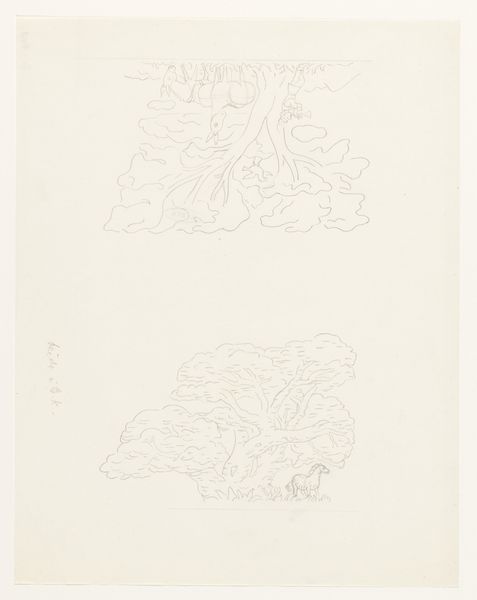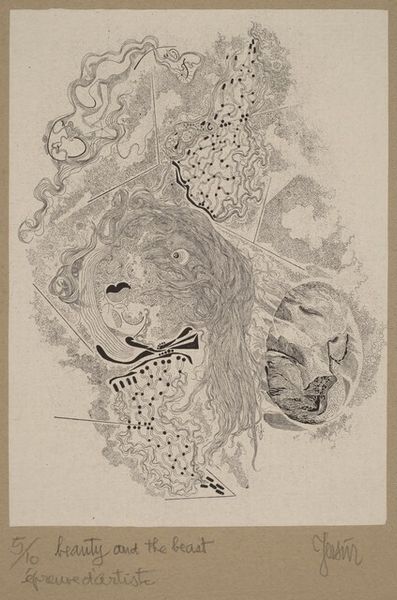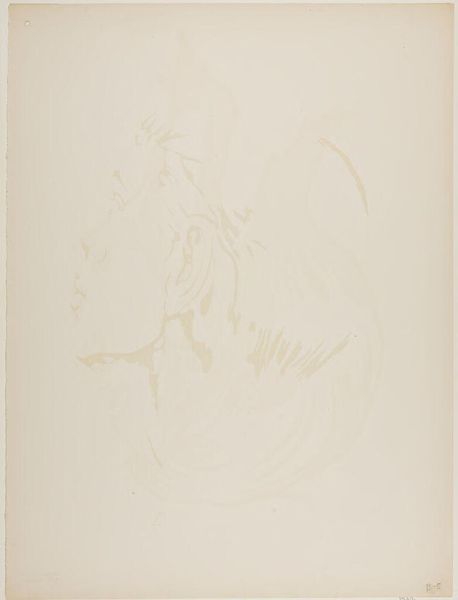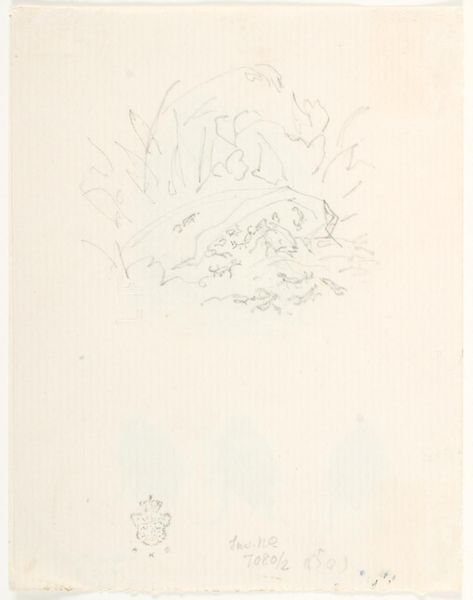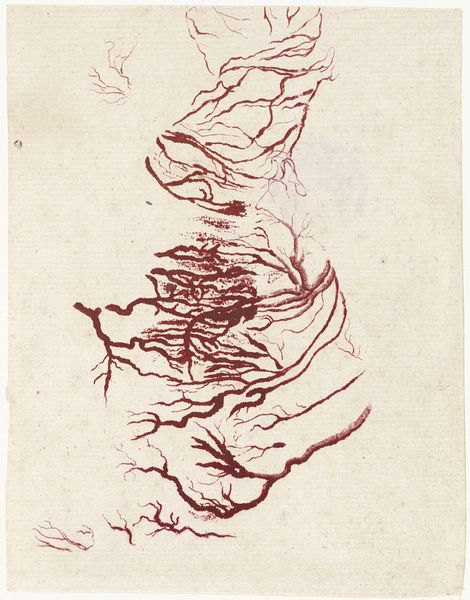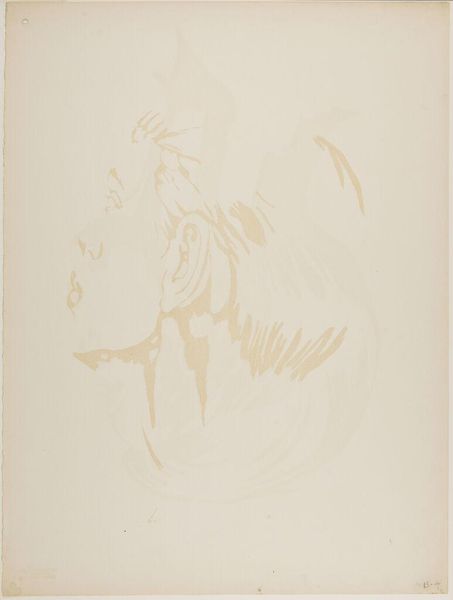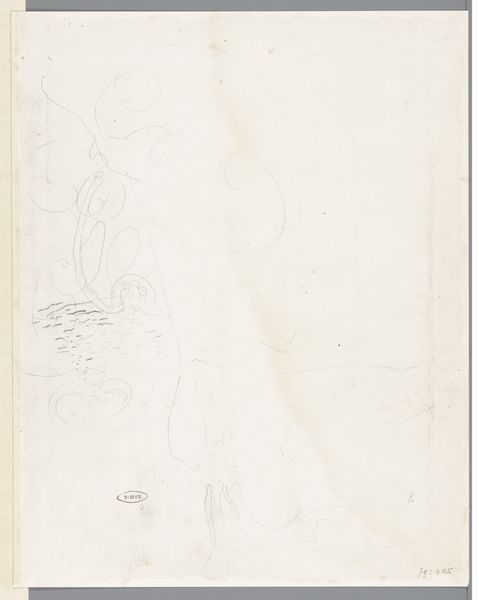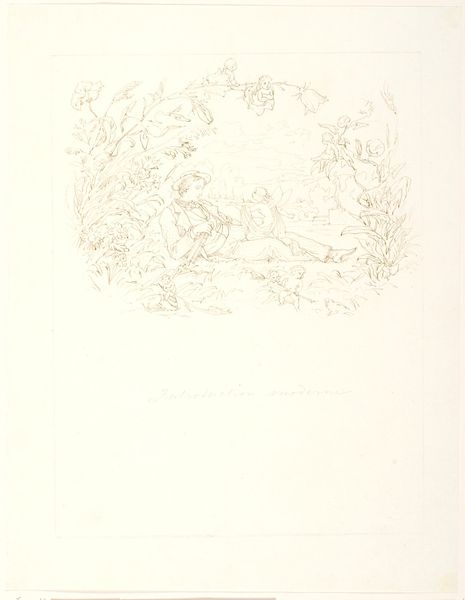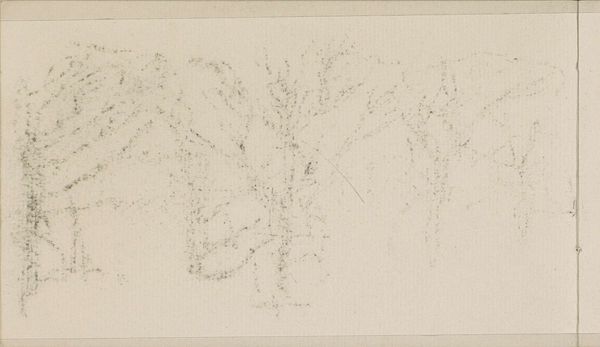
Dimensions: height 454 mm, width 214 mm
Copyright: Rijks Museum: Open Domain
Curator: This intriguing sketch is entitled "Ontwerp voor aardewerkdecoratie: struisveren," which translates to "Design for Ceramic Decoration: Ostrich Feathers," and it's attributed to Theo Colenbrander. We believe it dates from sometime between 1920 and 1928. Editor: It's remarkably ethereal, almost a ghostly impression of movement. The feather plumes, though sketched in pencil, have this incredible sense of lightness. The delicate line work almost makes them float off the page. Curator: Colenbrander was a key figure in the Dutch Art Nouveau movement. He radically transformed ceramic design, challenging conventional styles with bold patterns. And that context really matters here: pottery had traditionally been so hidebound to established styles. Editor: Right, but beyond just style, there's something almost regal about ostrich feathers. They evoke status, opulence...power. They carry connotations that predate the 20th century. What do you make of how he reduced this loaded symbol to near abstraction? Curator: Colenbrander uses the ostrich feather, so inextricably linked to colonial power, for what then became mass produced decorative ware. Its presence represents, and I’d say normalizes, global trade. He is not shying away from that at all, in my opinion. It speaks directly to who owned and could possess this sort of object, and what that possession implied. Editor: So it is about global power dynamics and commodity appropriation, but he has captured the feather, deconstructed it in a way. If this sketch then transforms the imperial symbol onto earthenware...does that democratize the symbolic value in a sense, or does it solidify an ongoing and unfair power structure in art? I almost want to say, as an artist of the 20th Century, it’s an almost ironic symbol of pride to be displayed so openly on your kitchenware? Curator: Democratization might be generous. Distribution perhaps? Either way, there's tension and a redefinition of symbolism. This sketch and associated earthenware, it's less about wealth now and more about bourgeois affectation of wealth. Editor: Precisely! It is that transformation in affect, that shift, I think, where the truly fascinating implications reside. Curator: Well put. It encourages one to reconsider what “prestige” imagery really stands for when it becomes a common household embellishment. Editor: Agreed. Makes you consider what cultural baggage we’re inviting into our homes even now.
Comments
No comments
Be the first to comment and join the conversation on the ultimate creative platform.
